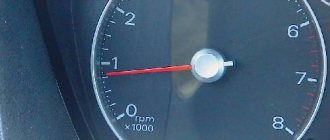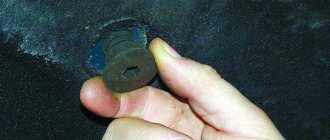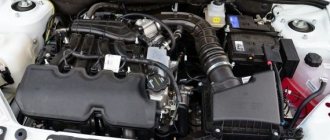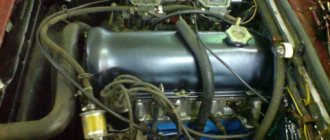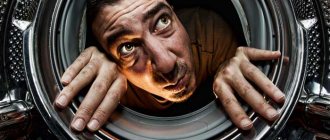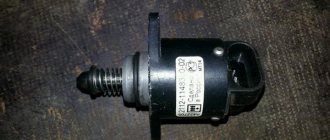It is a very sad situation when the VAZ 21099 injector does not start. Domestic cars are not famous for their reliability, therefore, you need to be able to find the cause of the breakdown and eliminate it if you own a VAZ. On this page we will tell you why the nine may not start and how to fix the main problems in a garage environment. Particular attention will be paid to the injection system, because understanding it is much more difficult than understanding that the starter does not turn.
The VAZ 21099 injector does not start for several reasons, there are not many of them, it will be possible to consider everything in detail. The good thing is that the injection system on this model is the simplest, so repairs and troubleshooting will not be difficult. It is important to know which elements are responsible for starting the engine and look for problems with them.
In order for the injection engine to start, the electronic control unit (ECU) must receive signals from almost all sensors that are under the hood. If one of the main sensors fails, the engine will not start. It is worth saying that most often the problem lies in the sensors.
Sensors that are involved in starting the engine:
- Crankshaft sensor;
- Temperature sensor;
- Mass air flow sensor (MAF);
- Idle air control (IAC);
- Throttle sensor.
In principle, the engine can start and run even without several sensors, however, if the crankshaft sensor fails, then the engine will not be able to start. Symptoms of a non-working crankshaft sensor are as follows: the starter turns and no changes occur, the engine does not “catch” even when the gas pedal is pressed. If with such symptoms you are sure that everything else is in order, you need to inspect the wiring of the DC; at the place where the connector is connected, the wires often break off. When the wires are intact, we can conclude that the DC is faulty. We buy a new recreation center and put it in place.
If the engine somehow “cages”, but does not start normally, it feels like two or three cylinders are working, then we look for the reason in other sensors. The first step is to remove the chip from the mass air flow sensor, because there is a possibility that this sensor gives incorrect readings on the amount of air and the ECU calculates the incorrect amount of gasoline. If this is the reason, then when the chip is removed from this sensor, the engine will start normally and will maintain increased speed at idle, this will mean operation in emergency mode.
In the case where removing the chip from the mass air flow sensor did not change the situation in any way, the engine continues to seize a little, we continue to look for the problem. While the starter is rotating, you can try pressing the gas pedal. With a high probability, the engine will start, and if you don’t give it more gas, it will immediately stall. This situation tells us that one of the sensors is faulty, except for the crankshaft sensor; if it breaks down, as we already understand, the engine cannot be started.
The easiest way is to find a person with a fuel-injected 8-valve engine that works properly, and install the sensors one at a time from his car onto yours. In this way, it is worth checking only three sensors: the temperature sensor (which is in the thermostat housing), the throttle sensor and the idle speed control. When the “culprit” is found, you need to buy the same sensor and replace it.
With the onset of cold weather, worn-out batteries make themselves felt. If on carburetor cars the sign of a dead battery is a weakly rotating starter or not rotating the crankshaft at all, then with an injector the situation is somewhat different. In a situation where the battery is not sufficiently charged, on an injection VAZ, when you turn the key, only relay clicks will be heard, and the dashboard lights will blink. This is the picture that scares many owners of this model, because they think that the problem lies somewhere in the “electrics”. So, if your car does not start with such symptoms, then you need to change the battery. But, if the battery is quite fresh, and at this time cannot become unusable, then the problem lies in its weak charging.
It often happens that the generator does not provide the required charge, but only produces 12.5-13 volts. If in the summer this was enough to slightly charge the battery and start the engine, then in cold weather such an “undercharged” battery will no longer crank the starter. If your car, with consumers turned off, is charging less than 13 volts, then you need to solve this problem. Possible causes include: insufficient alternator belt tension, faulty voltage regulator, worn brushes and worn slip rings. Reasons to check in this order.
VAZ-2109 does not start - what to do?
In general, diagnosing malfunctions of the controller (computer) and control system sensors, as well as the VAZ-2109 injector itself, is not much different from similar work for other cars. But due to the peculiarities of the “nine” control system, experienced owners of this car recommend the following solutions.
Most often, the injection “nine” does not start in winter. In this case, it is advisable to warm up and even recharge the battery - perhaps due to loss of capacity due to low temperature, it is not able to spin the engine shaft well.
Another “folk” method that helps is supplying air to the engine filter through a hairdryer. At the same time, heated air will flow into the cylinders. Many people claim that the VAZ starts right away.
Another possible reason: as a result of prolonged unsuccessful attempts to start, the spark plugs were filled with gasoline. In this case, it is recommended to try to start the car with the gas pedal pressed all the way to the floor - the spark plugs should dry out and the car will start. If this does not help, then unscrew the spark plugs and check for the presence of a spark. If it is not there, then either the spark plugs or the ignition system are faulty.
Carburetor engine does not start (reasons related to the ignition system)
Very often, the reason that a car engine does not start or starts and stalls is not a malfunction of the carburetor or power system, but problems with its ignition system. If the engine does not start, in most cases it is recommended to first check the ignition system, and only then look for the problem in the carburetor. This is especially true when starting the engine in wet weather or when there is a temperature difference.
Let's consider the most common reasons that a carburetor engine does not start due to a malfunction of the ignition system using the example of engine 2108 (21081, 21083) of VAZ 2108, 2109, 21099 cars and their modifications.
The easiest way to start troubleshooting is by visually inspecting the elements of the ignition system (suddenly something just jumped off somewhere) and then checking for the presence of a spark on the spark plugs (to determine whether the ignition system is working at all). And then move on to checking the armored wires, distributor cap, slider, etc.
The engine does not start or starts and stalls, reasons
— Battery is faulty
The battery could simply be dead. Its terminals or the tips of the power wires could also be oxidized. Oxidation can be removed with sandpaper, and the battery can be charged.
— Spark plugs are faulty
It is possible that the spark plug insulator is broken (current leakage to ground), or the gap between the spark plug electrodes is incorrect, or they are covered with black or oil deposits. To determine the malfunction, you need to unscrew the spark plugs and look at the carbon deposits on their electrodes. Check the gap. If the spark plug does not work at all, it may be flooded with fuel. See Spark Plug Problems. To determine the breakdown, you can perform a test by starting the engine in the dark (described in the Notes below).
Black carbon deposits on the central and side electrodes of the spark plug are formed when the car engine operates at early ignition timing angles.
— High-voltage wires are connected in the wrong order
If for some reason the wires were disconnected from the spark plugs or the distributor cap, it is quite possible that they were installed back with an error. Check the order in which the wires are connected.
The procedure for connecting wires to the distributor cover on VAZ 2108, 2109, 21099
— Incorrectly set ignition timing
If the timing is too early or too late, it is quite possible that the engine will not start or will have difficulty starting and stall. We set the ignition timing using a strobe or by ear by rotating the distributor until a stable idle speed appears within 700-800 rpm. For the required advance angles and the order of their installation, see “Setting the ignition timing on carburetor engines of VAZ 2108, 2109, 21099”.
Adjusting the angle using a distributor
— High-voltage wires are faulty
High-voltage wires may have damage to the protective coating (“breakdown”). The easiest way to check it is by the presence of a glow on them by starting the engine in the dark. You can also check their resistance using a tester. In addition, during a visual inspection we identify oxidized or damaged wire tips.
Measuring the resistance of high-voltage wires
— Distributor cover is faulty
In the event of a “breakdown” of the distributor cover, it is necessary to remove it and inspect it. Traces of a “breakdown” are visible visually (dots, stripes). In addition, it is necessary to evaluate the condition of the contacts inside and outside the cover and the condition of the central contact “coal”.
Distributor cover 2108
— The ignition distributor (“slider”) is faulty
If the “runner” breaks down, it must also be removed and inspected. Traces of a “breakdown” are visible visually. An interference suppression resistor in the “runner” can also cause the engine to not start or to start and stall. Replace it with a piece of copper wire and restart the engine.
Ignition distributor (“slider”)
— Ignition coil is faulty
You can visually assess the condition of the ignition coil cover. Cracks in it are not allowed (especially around the central contact), as this is a sign of “breakdown”. You can check the coil more thoroughly using a tester. In case of its absence, temporary replacement with a known good one. See "Checking the Ignition Coil".
Checking the primary winding of the ignition coil
— Hall sensor is faulty
Determining the health of the Hall sensor without a voltmeter is very difficult (See “Checking the Hall sensor”). It is possible to replace it with a known good one and then restart the engine.
Hall sensor, check
— The switch is faulty
Checking the serviceability of the switch without an oscilloscope is problematic. This can be done in advance using the voltmeter readings when turning the key in the ignition switch. See “Checking the switch of VAZ 2108, 2109, 21099 cars.”
Ignition system switch for VAZ 2108, 2109, 21099 cars
— Low voltage wires of the ignition system are faulty
Visually inspect the low voltage wires of the ignition system. We check for kinks, abrasions, chips that have come off or are not fully installed. We check the presence of voltage at terminal B+ of the coil and terminal 30/1 of the ignition switch. To help, you can take the “Ignition system diagram for VAZ 2108, 2109, 21099 cars.”
Diagram of the ignition system for VAZ 2108, 2109, 21099 cars
— The ignition switch is faulty
Current is supplied to the ignition system through terminals 30/1 (brown wire - current comes from the generator) and 15 (blue and black - current goes to the coil). If the contact in the block on the lock is oxidized or leaky, the ignition system will be de-energized and the engine will not start.
Notes and additions
— A preliminary check of the ignition system consists of checking the presence of a spark on the spark plugs (the unscrewed spark plug with the connected voltage wire is placed on the engine ground, the engine is cranked with the starter, the presence and strength of the spark on the spark plug is visually assessed). For more details, see “Checking the contactless ignition system of VAZ 2108, 2109, 21099 cars.”
— General check of the ignition system elements for breakdown: start the engine in the dark and visually inspect the spark plugs, armored wires, distributor cover, ignition coil. If they malfunction, sparking or glowing will be noticeable.
Twokarburators VK - More information on the topic in our VKontakte group, on Facebook Twokarburators FB and on Odnoklassniki - Twokarburators OK
More articles on the ignition system
— Starting a carburetor engine in cold weather
— Unstable engine idling (reasons related to the ignition system)
— Malfunctions of the distributor of VAZ 2108, 2109, 21099 cars
— “Failure” when pressing the gas pedal (reasons not related to the carburetor)
— Reduced power and throttle response of a carburetor engine (reasons related to the ignition system)
— The engine does not start in wet weather, reasons
Checking injectors and timing belt
When there is a spark and its color is bright bluish, check the fuel supply: turn out the injectors and turn the engine shaft with the starter. The fuel should be sprayed from the nozzle in a uniform cone-shaped “torch”. If instead the injector pours gasoline or splashes it, then it is clogged.
If the tested components are working, then look at the timing belt. Owners of the injection “nine” have more than once encountered the situation of the belt slipping by several teeth. In winter, this can happen when starting a cold engine when the camshaft rotates heavily. To check, look at the timing mark. If it matches, check the crankshaft sensor and its wire (sometimes it comes off). Then the remaining sensors are checked.
hard to start when hot 21093 injector
until the temperature drops to 50-60, it is unlikely that you will start it, I changed all the possible sensors, compression is from 9 and higher, the spark plugs are new, the starter turns like crazy, but turns stupidly and that’s it, sometimes it picks up, what could be the problem? gasoline in the injectors there is also...
The compression is already too low, it’s possible that the boost is being poured, the hot engine will evaporate without evaporating, resulting in fuel overflow
twenty-five again, try a different ignition module
I tried it, the whole point is this: I disconnect the chip from the coolant sensor (coolant sensor) and it starts! I was shocked, I replaced it with the same boyda but it’s better, I’ll look at the wiring...
O_o how? the fan should work normally
Well, I remove the chip, the valve works, it starts up normally!
In this case, go to the e-mail for diagnostics
gasoline is rubbish. This happens to me sometimes.
Good day everyone. With hope I turn to knowledgeable people. Six months ago I bought an injection 21099, and along with it I got myself a headache. On a cold engine(t
So I have the same canoe!
Good day everyone. With hope I turn to knowledgeable people. Six months ago I bought an injection 21099, and along with it I got myself a headache. On a cold engine(t
A friend had exactly the same nonsense as you on a V8. You remove the chip from the sensor, the car starts. He drove it like that until he sold it, and when he sold it, it stopped starting at all and there was a new buyer with no problems couldn't start it.
Good day! Perhaps off topic, but I had the same problem in two cars at once! first on 15k (after measuring the compression it turned out that it was the problem. It was: 6-3-9-12...no comments) On the second car 21093, 2002. had the same problem. managed to fix it today! I previously changed the fuel pump, filter, module... nothing helped! I checked the compression 12-11-12-11, I didn’t get around to measuring the pressure in the ramp! In the end it turned out to be simple! IT WAS ABOUT THE ELEMENTARY! The ignition marks have been knocked down! in my case, the former owner turned the crankshaft gear over. and the pin was inward! As a result, the damper pulley rotated and the crankshaft sensor did not work correctly... Perhaps this information will help someone
Good day, I had the same problem, also it would not start when hot. Before the fan worked, the car started but immediately stalled, I solved the problem by replacing the relay that turned on the computer and the fan relay. After the replacement everything worked as it should.
A few words and I'll add it! On the passenger side, under the shelf, there is a small block with three relays and three fuses. These three switches often work on and off. In this regard, their contacts quickly get dirty. Therefore, these relyushki need to be looked after. They need to be removed, disassembled and the contacts cleaned at least once a year (I do this once every six months). In the relay itself, the plate with the switching contact can be easily pulled out. The contacts have the shape of a hemisphere. If the shape of the sphere is damaged, then there is no point in cleaning it; change the relay. If the shape of the sphere is not damaged, clean the contact on the plate, as well as the other contact that sits rigidly in the relay body. In this case, you should never clean it with a file; it is not advisable to clean it even with No. 0 sandpaper. Use any non-smooth or synthetic material. Afterwards, rinse the contacts with alcohol or vodka, dry naturally or with clean meter, and reassemble. If you clean the contacts once, then you don’t have to go through the procedure of stripping the gear every time. It is enough to remove the cover of the relay, put a thin clean cloth moistened with vodka or alcohol on a thin screwdriver and wipe the contacts, then use the same, but dry piece of cloth. And you will never have problems like “it won’t start when hot”! One more thing (I’ve encountered this more than once). This block has three fuses: 30A and two 7.5A. So, it is in this block that a crack appears in the 7.5A fuses in the jumper between the contacts. The crack may or may not be noticeable to the eye, the device will show that the fuse is intact, but under load it may not work! Therefore, in my car, among other things, I have a set of fuses and at least a couple of relays.
Forgot to add! The problem when the car does not start when hot can often be in the temperature sensor, which is responsible for turning the fan on and off. It is really very easy to check whether this is true. The car will not start when the engine is hot. We climb under the hood and disconnect the wires (pull out the plug) from the temperature sensor. We start the car. The car won’t start right away; you’ll have to turn the starter for about three seconds. If the car starts, change the temperature sensor and be sure that it is factory-made.
Battery
The first thing you should pay attention to is the battery. Especially if the car has been in a garage or parked for more than a week. The battery tends to lose its charge. This is especially common for motorists in winter. Overnight, a battery can lose up to 30 percent of its total charge. The solution to the problem is to charge the battery. However, there are situations when you need to go right away. There is a way out of the situation. To do this, you need to turn on the car's headlights for a while (1-2 minutes). In this way we activate the electrolyte in the battery, thereby increasing the voltage level. When the electrolyte comes into action, the battery warms up and the current increases accordingly.
Popular causes of malfunction
The most common reasons account for about 95% of all cases when the starter does not turn. That’s why we pay attention to them first.
We recommend: Correct installation of piston rings
The starter does not turn differently in different situations. It is important to take this into account and clearly monitor all associated symptoms. So, even without the help of specialists, you will be able to return the unit to operation and resume normal operation of the ignition system
| Situation | Probable Causes |
| There is one click, after which the starter goes silent. |
|
| Multiple clicks occur in succession |
|
| Clicks are completely absent, as are other signs of starter life. |
|
Bendix
Often, simply disassembling and cleaning the internal components of the starter can eliminate problems with its functionality. Therefore, after removing the device and not finding damaged elements inside it, try to thoroughly clean everything, assemble it and put it back in place. It is likely that the starter will start turning.
When starting the engine, there is no response when turning the key
If a pungent odor appears when starting the starter, we can say that a short circuit has occurred. If there is no such effect, you should check the tightness of the terminals. Make sure the additional relay is working properly. The cause may also be deformation of the ring, which is located in the starter gearbox.
Often, visible or invisible damage to the key itself is the cause of failure to start the engine. Even if no damage is found, there is no need to rush to buy another one. It should be thoroughly cleaned and lubricated thoroughly. Perhaps after this it will continue to operate as normal.
After the repair has been carried out, do not put too much load on this small unit. After all, in fact, it begins the process of rotation of the massive flywheel and the operation of a group of engine pistons.
You should also know that the main task of the starter is to set the crankshaft of the car in motion until the spark catches the engine.
Malfunction of explosive wires
We check the wires, as they can also cause malfunctions. If the inside of the distributor cover is chipped and the contacts are scorched, then it needs to be replaced. After removing the slider, having first checked that the drum does not touch the Hall sensor, unscrew the bolts and disconnect the wiring and replace the sensor.
The wires on the distributor cover go in the following order (incorrect order of connecting the wires can also cause the car to not start):
- The first (it is marked on the cover) comes from the far left and also the first cylinder.
- Further, if you look clockwise, the second cylinder follows, and behind it the 4th.
- The far right wire comes from the third cylinder.
Under the casing there is a rubber timing belt. If the teeth (one of them) are worn down, and even more so if there is a tear on the belt itself, then replacement is needed.
If you still have questions about why your 9 won’t start, I recommend watching this video:
Candles
First of all, find out if there is a spark at all. The weakness of the latter allows you to start the engine while it remains hot, but it does not work when it is cold.
Unscrew the spark plug, place it against ground and crank the starter. If there is a spark, then there is probably a problem in the fuel system. We will tell you about it later.
It is necessary to do otherwise when the unscrewed spark plug works properly, but it turns out to be wet. Here you should check the timing belt. The latter sometimes jumps off, which disrupts the correct gas distribution and, accordingly, the VAZ engine does not want to start.
If you see that the spark plugs are filled with fuel, then perhaps this very circumstance is preventing you from starting the engine. Dry them with a burner or on a gas stove burner. When they turn out to be wet again during the next attempt, you will have to find out why this happened.
If there is no spark, the cause is sought further. It often lies in problems:
- crankshaft pulley or sensor that controls its position (DCPV);
- computer.
In most cases, the VAZ model 2109 injector does not want to start precisely because of the failure of the DPKV. Failure of other sensors does not prevent the engine from starting, it will simply not work correctly.
First, check whether the connector leading to it is intact and whether the wires are in good condition. It is the destruction or contamination of these elements that most often interferes with the normal operation of the DPKV, while the device itself is reliable.
To test the sensor, just hold a piece of metal close to it and measure the output voltage. It will fall if the piece of iron is taken away, and rise when it is brought close.
Another reason why a VAZ may not start is the crankshaft pulley. The disadvantage of this unit is that its teeth are partially made of rubber, which means they can come off or even scroll. This affects the sensor readings, and the computer, guided by them, does not want to supply voltage to the spark plugs. It’s not difficult to check - remove the casing from the timing belt (inspect it at the same time), and then examine the pulley.
There is a high probability that there is no spark due to a faulty ignition. First you should make sure that the connector leading to it is intact. Installing a known-good module on a Lada that does not want to start will allow you to confirm your suspicions.
It is imperative to inspect all wires. A break in them, even with working devices, often leads to the inability to start the engine.
Basic faults and step-by-step solutions
The VAZ 21099 carburetor does not start, which means you should look for a breakdown in one of the components described below:
- There is no voltage from the battery to the starter;
- Check the indicator on the battery; it should light green.
If it is black or red, it means the charge is very low and you need to recharge the battery. 20-25 minutes are enough to start the engine;
- The degree of wear of the graphite rod on the distributor of the trampler has exceeded the permissible standards, as a result of which current does not flow to the first cylinder and the mixture cannot ignite;
- We unscrew the cover of the distributor and look at the rod, it is centered inside. The minimum length should be 1.0 cm or more, if less, replace the tamper cover. Due to the fact that the graphite rod does not reach the distributor, the current is not transmitted to the spark plugs and, accordingly, there is no ignition.
- The throttle valve is closed and air does not enter the working chambers of the carburetor;
- Check the tension of the choke cable. The air damper rod must be strictly vertical; all other positions may overlap it and become a barrier to air. Press out the bolt and straighten the rod.
The fuel and/or air jets are clogged and cannot transfer the mixture to the combustion chamber; - You can only check by unscrewing the air filter cover and removing it along with the top carburetor cover. After unscrewing both types of jets, blow them with a stream of compressed air and screw them back in. There is no need to change.
- The line of the electrical cable that transmits current through the circuit is damaged;
- If you are not an electrician, then it will be difficult for you to determine which wire is damaged. Try only with the tester, starting from the ignition switch;
- There is no gasoline in the gas tank (for example, it was drained);
- The diaphragm in the fuel pump does not work or is damaged (see signs of a faulty fuel pump);
- Only by removing the top cover of the fuel pump can you understand the degree of integrity of the diaphragm. Replace if damaged.
- The cam on the fuel pump rod is damaged or severely worn, as a result of which the rocker rod does not touch it and fuel is not pumped into the system;
- In this case, it is necessary to change only the entire fuel pump as a whole. Once a cam wears out, it cannot be repaired.
- The air filter is clogged;
- The cylinder head is broken, and as a result, the compression level has dropped sharply and is not enough to ignite the mixture.
Muffler
Sometimes an injection car does not want to start due to shedding of the catalyst in the muffler. It serves to reduce harmful emissions and is installed in accordance with current environmental legislation on all cars.
When the catalyst crumbles, the gases cannot escape normally, which means that the car will not move, since the computer will not allow it to start. It is not difficult to check this possibility - unscrew the muffler mount so that the exhaust comes directly from the resonator. If this helps, then change the catalyst.
Lack of air and clogged filters
2109 carburetor does not start, there is spark, there is gasoline. In winter, the presence of gasoline does not mean it will enter the carburetor, since the water could freeze. We get to the gas pump and press the button. If it doesn’t gurgle, this means that the water is frozen; otherwise, it means that it is not frozen and fuel is flowing. The fuel pump or fine filter may also be faulty, or the hoses may be cracked. Having removed the air filter cover, we inspect the interior for cleanliness and try to start it.
Engine without cover. If it starts, then there is no air access to the carburetor (the filter is clogged and/or filled with oil). If there is no effect, then we continue testing. If the fuel pump has not failed, it may be that air is not getting into the float chamber or the needle valve is stuck. After unsuccessfully blowing with compressed air, it is necessary to blow through with the carburetor cover removed, and if there is still no effect, then the needle valve must be replaced. You can also check and blow out the nozzle by first unscrewing it (you need to screw it back very carefully so as not to “tighten it”). There is still a way to revive the engine. Having removed the hose, we spray a little gasoline into the 1st chamber, into the one that is closer to the car interior.
How to fix starter malfunctions with your own hands
The electrical component of the starter consists of the following structural elements:
- winding;
- brush assembly;
- solenoid relay.
When checking the solenoid relay, skip the starter operation, bypassing its switching. The relay has 3 terminals at once, one of which is the control terminal. The remaining 2 large terminals, located at the input to the battery and at the output of the starter, are closed using a screwdriver or wrench. Closing for a short period of time is enough, the main thing is that the tool you are using does not touch the metal body directly under the hood.
Observe the changes in the starter during the process of closing the terminals - if the device rotates, perhaps with a clearly audible crackling sound, then the fault is caused by the solenoid relay.
Remember that starting the engine in this way is prohibited, because the main gear of the device does not engage.
Most likely, the contact planes on the inner plane simply burned out, and therefore a dielectric layer of metal oxides formed on top. To burn the contacts, there is no need to make great efforts; just one start of the VAZ-2109 engine is enough.
There are 2 ways to repair the VAZ-2109 solenoid relay:
- Dismantle the device and disassemble it into components, clean the contacts.
- If it is financially possible, it is better to replace the relay completely. Practice shows that if a relay fails, the contacts will have to be cleaned more and more often to restore its operation. If you want the repaired relay to last a long time, give preference to this option for repairing the starter if the device does not spin or click.
